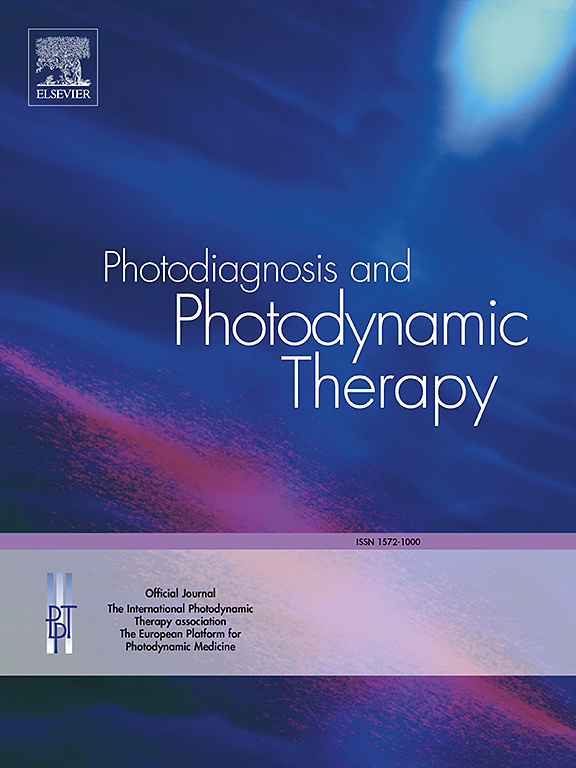Swept-source optical coherence tomography features of choroidal tumors and tumor mimics: A 5-year retrospective study
IF 3.1
3区 医学
Q2 ONCOLOGY
引用次数: 0
Abstract
Background
These lack a thorough comparison of swept-source optical coherence tomography (SS-OCT) features among different kinds of choroidal tumors and tumor mimics.
Methods
This retrospective case series study based on 305 eyes from 298 consecutive patients with choroidal tumors or tumor mimics treated at Beijing Tongren Hospital between July 2019 and March 2024. The diagnostic performance of SS-OCT features in distinguishing malignant tumors were evaluated.
Results
The present study included choroidal melanoma (n = 113), choroidal lymphoma (n = 11), choroidal metastasis (n = 9), choroidal hemangioma (n = 92), choroidal nevus (n = 9), choroidal osteoma (n = 32), RPE adenoma (n = 4), choroidal tuberculoma (n = 2), posterior scleritis (n = 2), and choroidal leiomyoma (n = 1). The median thickness and largest basal diameter were 2.9 mm (interquartile range: 2.0–4.2) and 9.0 mm (interquartile range: 5.7–11.3). Among all SS-OCT features, multivariable logistic regression showed optical shadowing (Odds Ratio [OR]=104.1, 95 %CI: 5.33–2028.8), subretinal fluid (<3 mm from margin: OR=100.9, 95 %CI: 2.21–4607; >3 mm from margin: OR=24.2, 95 %CI: 2.14–274.0), and overlying choriocapillaris complete loss (OR=52.3, 95 %CI: 4.85–552.7) highly indicated malignant choroidal tumor. Choriocapillaris loss was more sensitive (0.962, 95 %CI: 0.926–0.992) in identifying malignant tumors than optical shadowing (0.791, 95 %CI: 0.730–0.850) and subretinal fluid >3 mm from the tumor margin (0.714, 95 %CI: 0.639–0.788). Choriocapillaris loss also showed high sensitivity (0.923, 95 %CI: 0.919–1.000) and specificity (0.973, 95 %CI: 0.940–1.000) in identifying choroidal melanoma from choroidal nevus. The appearance of choriocapillaris loss or subretinal fluid >3 mm from the tumor margin showed 100 % sensitivity in identifying malignant amelanotic tumors.
Conclusions
Choriocapillaris loss, optical shadowing, and extensive subretinal fluid can be used to identify malignant tumors.
脉络膜肿瘤和肿瘤模拟的扫描源光学相干断层扫描特征:一项5年回顾性研究。
背景:这些研究缺乏对不同类型脉络膜肿瘤和模拟肿瘤的扫描源光学相干断层扫描(SS-OCT)特征的全面比较。方法:对2019年7月至2024年3月在北京同仁医院连续治疗的298例脉络膜肿瘤或肿瘤模拟患者的305只眼进行回顾性病例系列研究。评价SS-OCT特征对恶性肿瘤的诊断价值。结果:本研究包括脉络膜黑色素瘤(113例)、脉络膜淋巴瘤(11例)、脉络膜转移(9例)、脉络膜血管瘤(92例)、脉络膜痣(9例)、脉络膜骨瘤(32例)、RPE腺瘤(4例)、脉络膜结核瘤(2例)、后巩膜炎(2例)、脉络膜平滑肌瘤(1例)。中位厚度和最大基径分别为2.9 mm(2.0 ~ 4.2)和9.0 mm(5.7 ~ 11.3)。在所有SS-OCT特征中,多变量logistic回归显示光学阴影(比值比[OR]=104.1, 95%CI: 5.33-2028.8)、视网膜下液(距边缘3mm处:OR=24.2, 95%CI: 2.14-274.0)和上覆毛膜完全缺失(OR=52.3, 95%CI: 4.85-552.7)高度提示恶性脉络膜肿瘤。绒毛膜脱落对恶性肿瘤的识别灵敏度(0.962,95%CI: 0.926-0.992)高于光学阴影(0.791,95%CI: 0.730-0.850)和距肿瘤边缘0.3 mm的视网膜下液(0.714,95%CI: 0.639-0.788)。绒毛膜脱落对脉络膜黑色素瘤和脉络膜痣的鉴别也具有较高的敏感性(0.923,95%CI: 0.919-1.000)和特异性(0.973,95%CI: 0.940-1.000)。绒毛膜毛细血管脱落或距肿瘤边缘3mm的视网膜下积液,对恶性无色素瘤的鉴别灵敏度为100%。结论:绒毛膜脱落、光学阴影和广泛的视网膜下积液可用于鉴别恶性肿瘤。
本文章由计算机程序翻译,如有差异,请以英文原文为准。
求助全文
约1分钟内获得全文
求助全文
来源期刊

Photodiagnosis and Photodynamic Therapy
ONCOLOGY-
CiteScore
5.80
自引率
24.20%
发文量
509
审稿时长
50 days
期刊介绍:
Photodiagnosis and Photodynamic Therapy is an international journal for the dissemination of scientific knowledge and clinical developments of Photodiagnosis and Photodynamic Therapy in all medical specialties. The journal publishes original articles, review articles, case presentations, "how-to-do-it" articles, Letters to the Editor, short communications and relevant images with short descriptions. All submitted material is subject to a strict peer-review process.
 求助内容:
求助内容: 应助结果提醒方式:
应助结果提醒方式:


